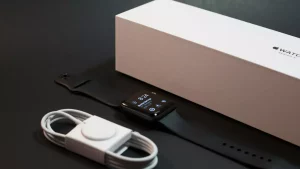It’s not happening in hospitals or laboratories — the most powerful health transformation of our time is happening quietly, in our homes.
Welcome to 2025, where technology and wellness finally work together.
From smartwatches that predict illness before symptoms appear, to mirrors that analyze your skin in real-time, the future of personal health is no longer a distant dream — it’s already on your wrist, in your bathroom, and even in your pocket.
The Rise of Preventive Technology
For decades, healthcare was reactive — we only sought help when something went wrong.
But smart devices are flipping that script.
Today’s AI-powered wearables can detect irregular heart patterns, stress levels, and even changes in sleep quality long before we notice them ourselves.
A 2025 report from MIT Technology Review notes that over 70% of health-conscious users now rely on smart devices to monitor vital signs daily — not for diagnosis, but for prevention.
Learn more about the tech behind this in Artificial Intelligence 2025.
Smart Mirrors, Scales, and Beyond
Imagine standing in front of your mirror and getting instant feedback on hydration, skin tone, or stress levels.
Smart mirrors and scales are turning bathrooms into personal health labs, using sensors and microcameras to track everything from posture to blood oxygen.
This isn’t science fiction — it’s data-driven wellness.
Discover more home upgrades in Smart Kitchen Revolution 2025.
AI Coaching and Personalized Wellness Plans
Forget generic fitness apps. The next generation of health technology delivers personalized coaching powered by AI.
These digital assistants learn from your behavior — sleep, movement, mood — and build wellness plans tailored specifically to you.
Some even adapt in real time: if your smartwatch senses you’re stressed, it might suggest a breathing exercise or adjust your lighting to help you calm down.
The Power of Continuous Data
The secret behind all of this? Continuous, passive data collection.
Smart rings, patches, and wearables collect tiny pieces of information that, when analyzed together, paint a detailed picture of your body’s rhythm.
This allows users to make small lifestyle changes with big long-term results — like improving sleep hygiene or balancing nutrition.
And unlike old fitness trackers, the latest devices are medical-grade accurate, yet stylish and comfortable enough to wear all day.
Health, Privacy, and Trust
Of course, personal data means privacy concerns.
But in 2025, transparency has become a feature, not an afterthought.
Most top-tier wellness brands now process health data locally on-device, meaning your metrics stay private and encrypted.
This trust has become a new standard — users are choosing brands that respect both health and data sovereignty.
The Emotional Side of Digital Wellness
Interestingly, the more connected health becomes, the more people are rediscovering the human side of wellness.
Smart devices don’t replace self-care — they enhance it.
A gentle reminder to hydrate, a calm voice suggesting deep breathing, a sleep score that motivates you — these small touches create habits that feel natural and personal.
Technology is teaching us to take care of ourselves again, with empathy coded in algorithms.
Looking Ahead — The Future of Personal Wellness
We’re moving toward a world where healthcare starts before hospitals.
Where your devices don’t just measure — they understand.
By 2030, experts predict that home-based smart health ecosystems will replace 40% of traditional checkups, focusing instead on prevention, behavior, and balance.
The future of wellness isn’t about replacing doctors — it’s about empowering people.
Final Thoughts
The real health revolution isn’t loud or flashy.
It’s quiet, personal, and happening one heartbeat, one notification, one habit at a time.
The next time your smartwatch vibrates, remember: it’s not just tracking your steps — it’s helping you live better, longer, and smarter.






